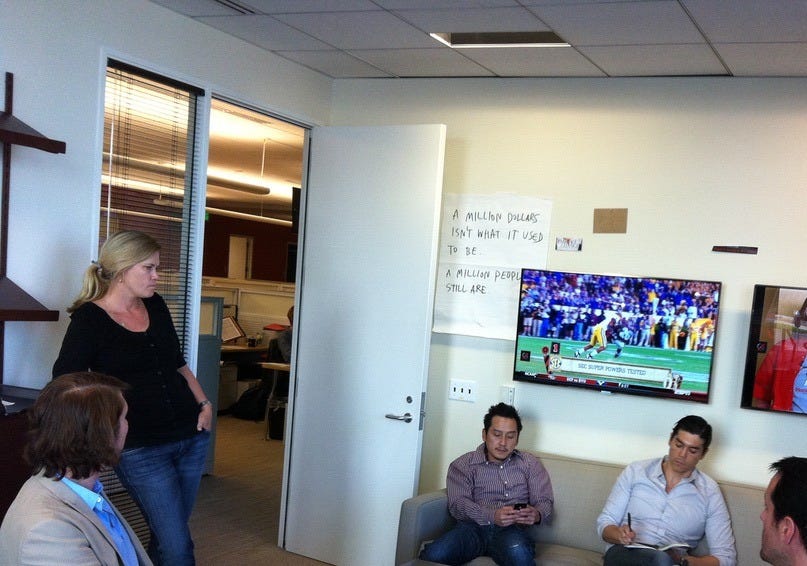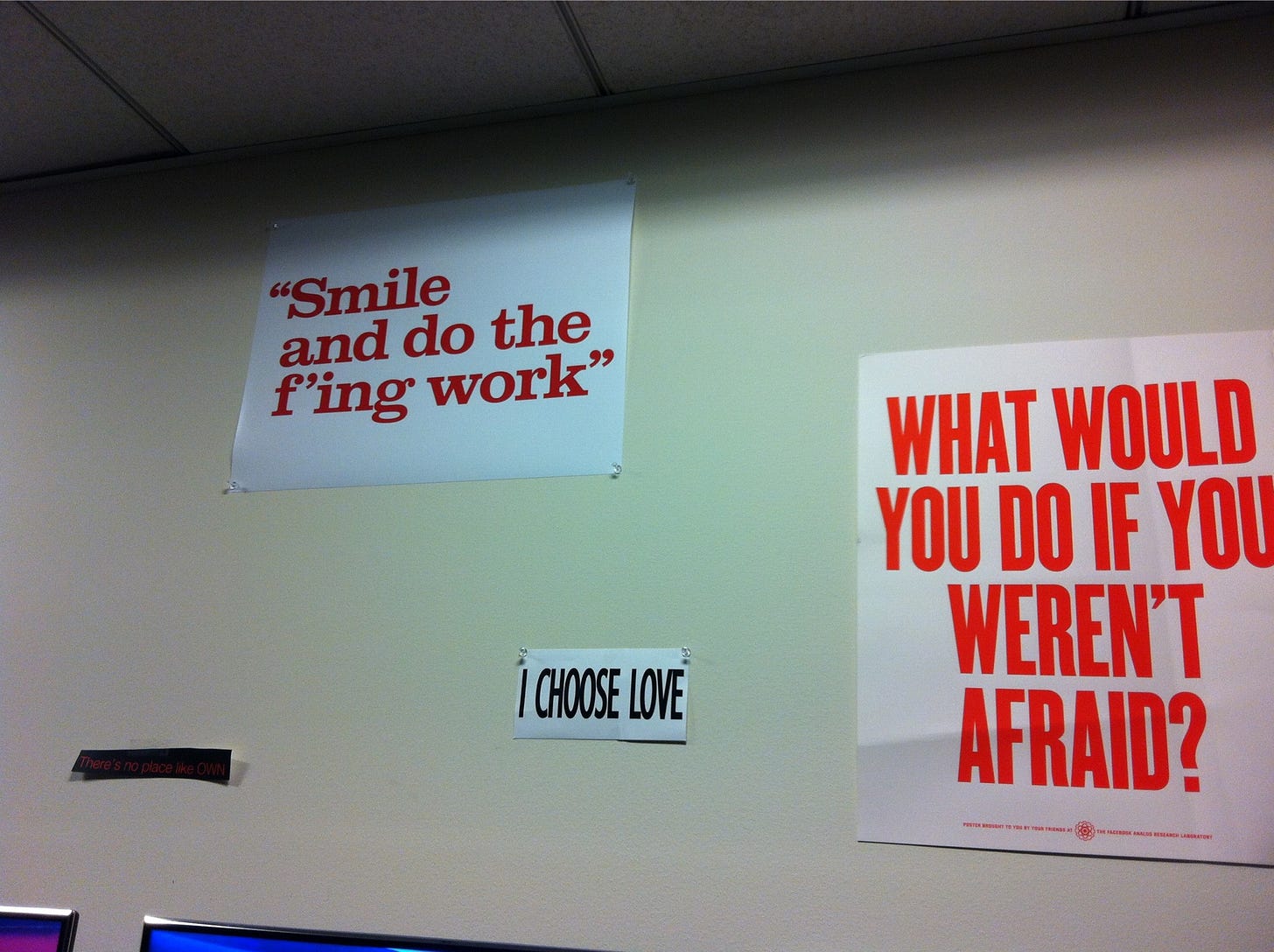The Fog of No
The greatest threat to your strategy isn’t the wrong yes — it’s knowing with courage, to say no.
The Fog of War has stayed with me for years. To me, it’s one of the most powerful, simple documentaries ever made. Errol Morris’ haunting film about Robert McNamara isn’t just about history; it’s about the high cost of making decisions when you can’t see the whole picture. The thesis of the film is that McNamara developed eleven life lessons based on his reflections as Defense Secretary, which he shares point by point through this documentary.
For me, the most memorable is deceptively simple: empathize with your enemy. As he tells it, twenty years after the end of the Vietnam War, he sat down with Võ Nguyên Giáp, the former commander of the North Vietnamese Army. McNamara entered the conversation with the American perspective that the war was about halting the spread of communism. Giáp saw it entirely differently.
For the North Vietnamese, it had never been a matter of communism versus capitalism. It was about independence, freedom from foreign control, just as Americans had once fought for their own sovereignty from England. The two views couldn’t be further apart, according to McNamara.
That revelation wasn’t just humbling for him; it was eye-opening.
Two sides had fought for years, at a staggering cost in terms of money and young lives, without even sharing a common understanding of what they were fighting over, despite what both men believed.
I still often think about that moment in the film, and the emotion on his face as he told this story. The sad reality of what they believed they were fighting for, at the time, and the ultimate catastrophe that was the war costs for both countries.
But that is what FOG does. It’s blinding and confusing. Fog of War did that then, and it’s what fog does now. It convinces you you’re seeing the world clearly when in reality, you’re navigating through haze, assumptions, and noise. You can end up making huge, irreversible commitments while aiming at the wrong objective entirely.
(Full disclosure: my father fought in Vietnam and shared with me and my brothers the terrible things he saw. Everything about that experience over there, and when he came home. It shaped who he was for better and worse, and me along with it.)
In business, the stakes aren’t always life and death, but the pattern is identical. Leaders say yes to projects, markets, and initiatives, believing they’re serving the strategy, only to realize later that they weren’t even aligned on what the strategy was. Then they are confused at the lack of results, failure, or missed opportunities.
Here’s the truth:
As a leader of a company or division, if you can’t tell me what you’ve said no to, then apparently you’re saying yes to everything. And if you’re saying yes to everything, you have no strategy.
I call this The Fog of No.
It’s the haze that rolls in when a decision needs to be made but the path forward isn’t clear. Internal politics get loud. The data is incomplete, or, moreover, spun to you. The opportunities are shiny and feel good. And in that moment, among all the feels, the easy, safe choice is just to say yes. A ‘foggy’ yes; when know it should be a no.
We tell ourselves we’re being flexible. We call it “keeping options open” or “staying agile.” But what we’re really doing is eroding our strategy one agreeable decision at a time.
Signs That Cut Through the Fog
When I was at OWN, before we were profitable, we were swimming in the fog. Not because we didn’t know our goal, we were clear on that. But the road was lined with side streets marked “good idea,” each one tempting enough to pull us just far enough off our course.
During this process, I began collecting signs. Literally. Things I saw that tried to shift the culture, signs from meetings, moments, anything to harken back to our core strategy and cut through the fog. They weren’t motivational posters; they were strategic anchors.
One of my favorites came from our marketing and digital lead, and my great friend Glenn Kaino. As we were building a new online program for Oprah, we thought a goal of a few hundred thousand people was an aggressive goal until Glen wrote on a board:
A million dollars isn’t what it used to be. A million people still are.
That line became a rallying cry. It sliced through every conversation that tried to pull us toward things that weren’t about getting subscribers. That line CLEARED all fog. Whenever the fog thickened, that phrase helped anchor us to our goal.
Another came from Sheryl Sandberg’s office when she was COO of Facebook. She was giving me a tour of the campus, and I saw this one sign. We talked at length about it, and she was so nice that she gave it to me on the spot. It was simple, it read:
What would you do if you were not afraid?
I hung it in my office. I used that sign as a way to reinforce my “NO.” Be bold, stay on course.
The CEO’s Fog
And yet, the people most likely to get lost in the fog are often the ones at the top.
CEOs live in an inbound hurricane: partnerships, product pitches, investment decks, quick asks, “game-changing” introductions. The sheer volume of ideas can create a constant environment where everything feels worth a quick yes.
I’ve been there. You’re running fast, meeting after meeting, and before you know it, your calendar, your energy, and your decisions bear almost no resemblance to the priorities you set.
That’s why, as a CEO, your version of “What have you said no to?” comes with an extra question: “When’s the last time you re-evaluated your own priorities?”
It’s easy to point to the company’s pillars and say, “We’re aligned.” It’s harder to look at your own calendar and admit you’re violating it daily.
If you’re the leader, your fog is the company’s fog. And if you’re not measuring yourself against the same key pillars you expect from everyone else, you’re not just drifting, you’re pulling the whole organization with you, deeper into the fog bank.
Lifting the Fog
The Fog of No is tricky because it doesn’t feel like failure in the moment. Saying yes is energizing. It buys you goodwill. It lets you avoid uncomfortable conversations.
But every 'yes' has a cost, unless it is anchored to your objectives. Time, whether in terms of money, focus, or talent, comes at a price. The cost isn’t immediately visible, but it’s always present. Over time, these costs accumulate into something you can’t ignore: strategic drift in the fog.
The leaders and companies that avoid that drift aren’t the ones that say no most often. They’re the ones who know exactly why they’re saying no. And they can connect those decisions directly back to the strategy.
That’s the moment you know the fog is lifting: when leaders in different parts of the organization are saying no to various things for the same reason. That’s alignment. That’s clarity.
The fog will never be gone for good. You can’t control the weather. But you can control your visibility.
I’ll leave you with this:
What have you said NO to in the last 90 days?
If you can answer that with specifics and with pride, you’re probably leading out of the fog.
If you can’t, you’re still in it.
And remember: If you’re saying yes to everything, you have no strategy at all.







I really enjoyed this one, Erik! Great job!